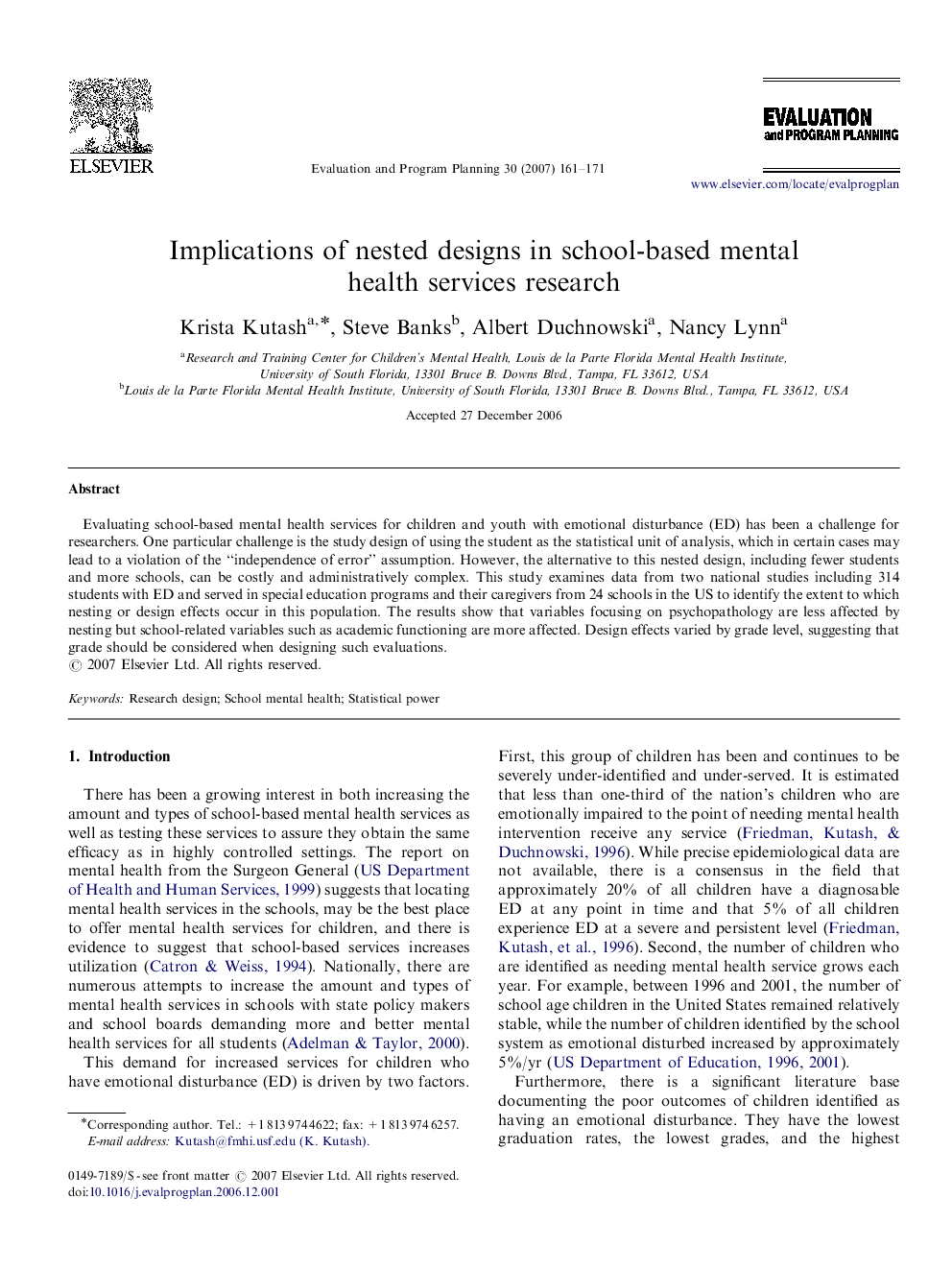| Article ID | Journal | Published Year | Pages | File Type |
|---|---|---|---|---|
| 322407 | Evaluation and Program Planning | 2007 | 11 Pages |
Evaluating school-based mental health services for children and youth with emotional disturbance (ED) has been a challenge for researchers. One particular challenge is the study design of using the student as the statistical unit of analysis, which in certain cases may lead to a violation of the “independence of error” assumption. However, the alternative to this nested design, including fewer students and more schools, can be costly and administratively complex. This study examines data from two national studies including 314 students with ED and served in special education programs and their caregivers from 24 schools in the US to identify the extent to which nesting or design effects occur in this population. The results show that variables focusing on psychopathology are less affected by nesting but school-related variables such as academic functioning are more affected. Design effects varied by grade level, suggesting that grade should be considered when designing such evaluations.
